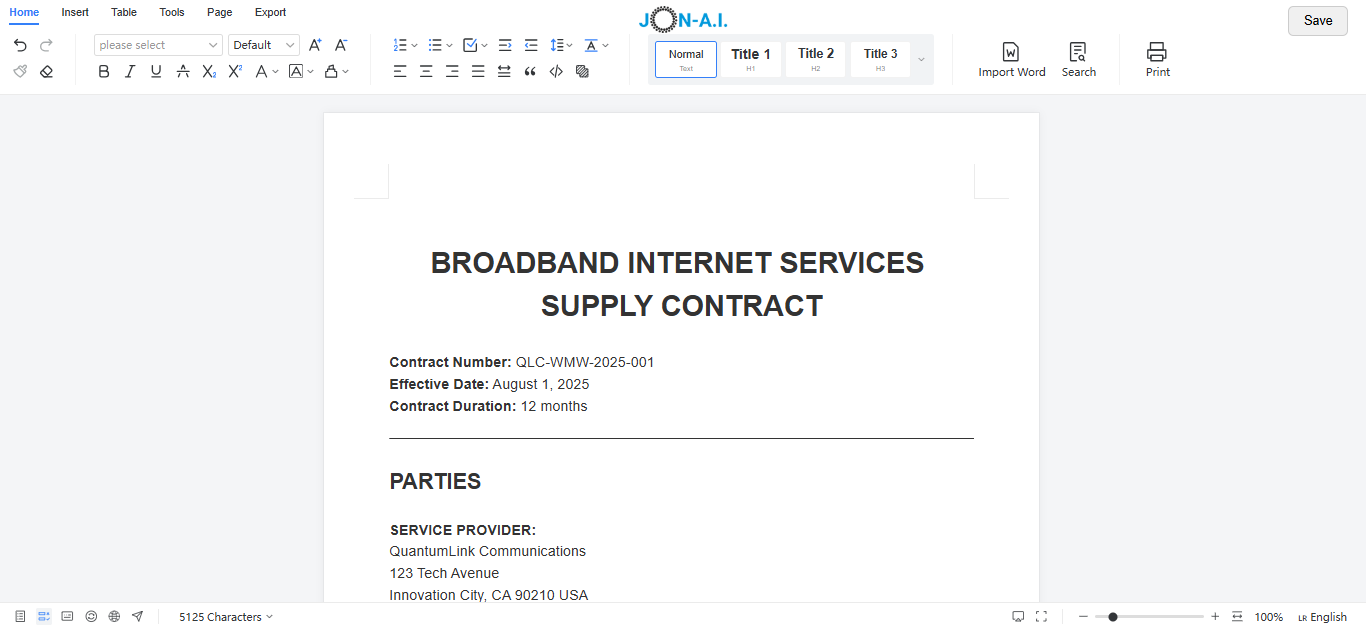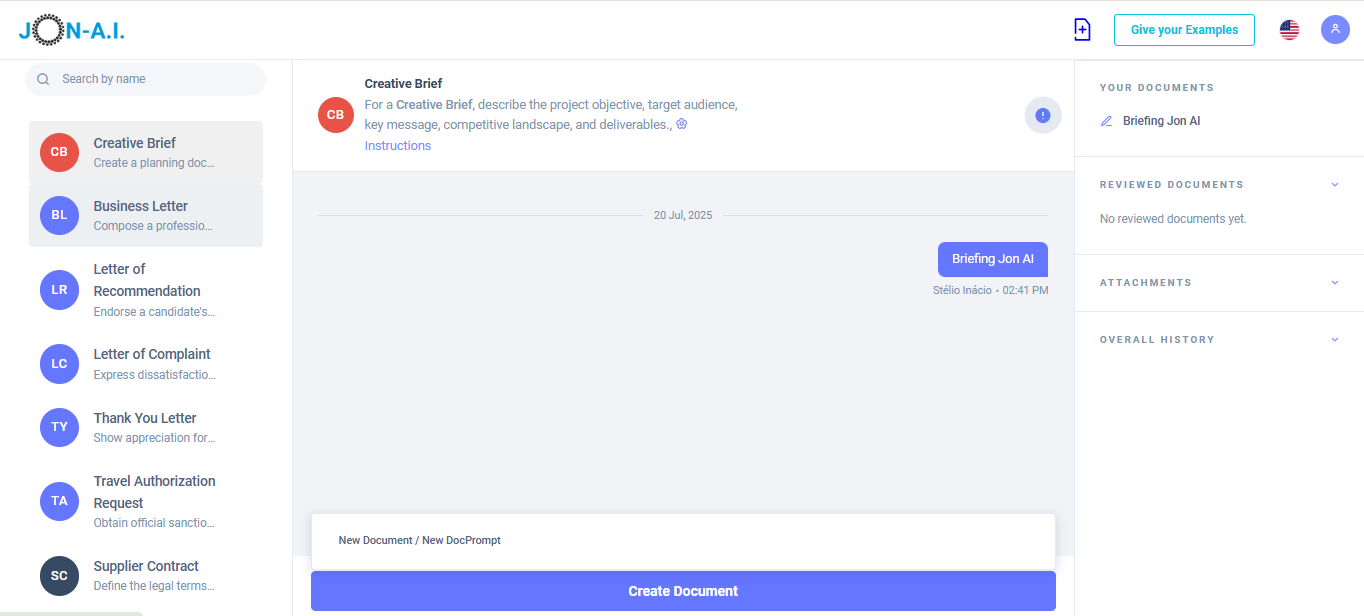AI-Powered Document Hub for National Libraries, Museums, and Archives
National libraries, museums, and archives are the trusted custodians of our collective memory and cultural heritage. Their mission is to preserve the past and inspire the future. While new AI technologies are beginning to transform how the public can discover and interact with digital collections, the internal operational and administrative work of these vital institutions remains a significant challenge. The processes of planning exhibits, securing grants, managing contracts, and preserving institutional knowledge are often as complex as the collections themselves.
This article will demonstrate how Jon AI's AI Documents, AI Invoices, AI Quotations, AI Receipts provides a secure, intelligent document hub designed for the unique needs of cultural heritage institutions. Built on a private Retrieval-Augmented Generation (RAG) framework, our platform automates administrative workflows and creates a unified knowledge base, empowering your teams to focus on their core mission of preservation and public engagement. We will prove how our integrated solution delivers:
- Accelerated Exhibition and Project Planning: Rapidly generate comprehensive proposals for new exhibits, digitization projects, and grant applications.
- Streamlined Collections-Related Administration: Automate the creation of loan agreements, vendor contracts for conservation, and handling protocols.
- Preservation and Activation of Institutional Knowledge: Create a searchable "digital archives" for your institution's operational history, policies, and expertise.
- Enhanced Public Engagement and Outreach Planning: Simplify the creation of marketing campaigns, educational materials, and sponsorship proposals.
- A Secure Vault for Your Institution's Data: Protect sensitive donor information, unpublished research, and strategic plans.
The Heritage Paradox: Preserving the Past with Future-Ready Operations
Cultural institutions face a unique paradox: they must operate with the meticulous care of a conservator and the agile outreach of a modern media company, often with limited resources.
- The Grant Cycle and Proposal Grind: The constant need to write detailed, persuasive grant proposals and project plans to secure funding is a massive drain on the time of your most experienced curators and directors.
- Complex Administrative Workflows: A single exhibition can involve dozens of loan agreements, contracts with designers and shippers, and detailed installation timelines. Managing this paperwork is a huge logistical challenge.
- The Risk of "Brain Drain": When a long-serving curator, registrar, or archivist retires, decades of invaluable knowledge about the collection's history, past exhibitions, and specific procedures can be lost forever.
- Inaccessible Internal Policies: Critical protocols for object handling, conservation lab safety, or deaccessioning are often buried in dense manuals, making them hard for staff and volunteers to access and follow correctly.
A Secure "Digital Vault" for Your Institution's Legacy
At Jon AI, we understand that the data surrounding your collection is as precious as the collection itself. Our platform is built on a secure, private Retrieval-Augmented Generation (RAG) model. This creates a completely isolated "digital vault" for your institution's data. Our proprietary Pastor technology ensures the AI learns and operates *exclusively* from your own private documents. Your donor lists, confidential research, and strategic plans are never exposed to public models and never leave your control.
The AI for Your Operations, Complementing Your Collection Management System
Jon AI is designed to manage your institution's *administrative and operational* documents and knowledge. It is a powerful tool for your curators, registrars, marketers, and administrators. It **complements, but does not replace,** your specialized Collections Management System (CMS) or Digital Asset Management System (DAMS). Jon AI manages the project proposals, contracts, and policies; your CMS manages the artifact cataloging and metadata.
Specialized Assistants for the Modern Cultural Institution
Jon AI provides dedicated assistants to support the diverse functions of your library, museum, or archive:
- For Curators & Project Managers: Use the `Project Assistant` to instantly generate a detailed "Project Proposal" for a new exhibition or grant. Manage complex installations with "Task Lists" and prepare for any eventuality with a "Risk Management Plan."
- For Registrars & Collections Staff: Use the `Administration` and `Legal Assistants` to create "Supplier Contracts" for conservation services, "Lease Agreements" for incoming/outgoing loans, and to draft and manage all critical `Company Policy` documents for collections handling and care.
- For Development & Marketing Teams: Use the `Marketing & PR Assistant` to create a comprehensive "Marketing Campaign Plan," draft "Event Sponsorship Proposals" for fundraising galas, and write "Press Releases" to announce new acquisitions or exhibits.
- For Volunteer Coordinators: Use the `Project Assistant` to generate clear and professional "Volunteer Agreements," outlining roles, responsibilities, and adherence to institutional policies.
From Conception to Exhibition: An Integrated Curatorial Workflow
Imagine planning a major historical exhibition with Jon AI as your co-pilot:
- The Proposal: A curator uses the `Project Assistant` to draft a rich `Project Proposal`, commanding the AI to "pull in object lists from our previous 'Renaissance Art' exhibition and budget data from the 'Ancient Worlds' gallery installation" to create a data-rich plan.
- The Loans: The registrar asks the AI Chat, "Show me our standard template for an incoming loan agreement for a high-value painting." The AI provides the correct `Lease Agreement` template, which is then customized and sent.
- The Installation: An installation technician, handling a delicate artifact, is unsure about the specific environmental requirements. On a tablet, they ask the AI Chat, "What is the required humidity range for 16th-century vellum manuscripts as per our collections care policy?" The AI instantly provides the precise, official guideline from the `Company Policy` document.
This seamless flow of information ensures efficiency, compliance, and the highest standard of care for your collection.
The Unified Hub for Cultural Heritage Management
While your CMS is the database for your collection, Jon AI is the intelligent, interactive "master binder" for your entire operation. It's the only platform that deeply integrates the generation of complex operational documents—from grant proposals to loan agreements—with a powerful, conversational AI that can answer nuanced questions about them. The policy document your conservation team writes becomes the instant answer for a technician on the gallery floor.
Proven Benefits for Your Institution
As we have demonstrated, adopting Jon AI is a strategic investment in the future and sustainability of your institution. By leveraging our platform, your organization will achieve:
- Accelerated Exhibition and Project Planning: Secure funding and launch new initiatives faster with powerful proposal generation tools.
- Streamlined Administration: Reduce the time your expert staff spends on paperwork, freeing them to focus on curation, research, and conservation.
- A Preserved and Activated Institutional Memory: Safeguard your operational knowledge for future generations of staff and leadership.
- Enhanced Public Engagement Planning: Create more effective and consistent outreach campaigns to grow your audience and impact.
- A Fortified and Secure Operational Hub: Protect your institution's sensitive data and ensure procedural consistency across all departments.
Jon AI is not just a tool; it is a transformative partner for cultural institutions, enabling them to operate with the efficiency and agility required in today's fast-paced world while remaining true to their mission of preserving our shared heritage.
Example of generated documents
Generated Documents open in an online editor like Microsoft Word or Google Docs, that you can edit:
 AI Documents, AI Invoices, AI Quotations, AI Receipts
AI Documents, AI Invoices, AI Quotations, AI Receipts








